Welcome back to the Star Wars Book Club! This week we’re discussing Revenge of the Sith by Matthew Stover. Since this is a movie novelization, I’ve decided to go full spoiler for the remainder of the review since anyone who happens to find a Substack about Star Wars books will almost surely be well-acquainted with the movies.
Thanks for being here, enjoy the read, subscribe to get more reviews like this one, and leave any and all thoughts, comments, and questions in the comments section down below! I love hearing from you!
My rating: 5/5
Pub Date: April 2, 2005
Legends/Canon: Legends Movie Novelization
Timeline: 19 BBY
Why A Movie Novelization?
First and foremost, why create a movie novelization? Interestingly enough, novelizations began in the 1910s and 1920s for silent films. They became more profitable in the 1970s before home video, as a way to re-experience popular movies outside of tv airings. Then we come to today where, to no one's surprise, they are used as extra marketing for upcoming movies. (for more extensive, and less paraphrased, info on novelizations check out this wikipedia page)
So where does that leave me? Firmly in the camp of re-experiencing enjoyment, which is exactly where I like to be.
Speaking of enjoyment, let’s get into the details.
The Elevator Pitch: The war against the Separatists has reached its breaking point. Can the Jedi Knight duo Anakin Skywalker and Obi-Wan Kenobi overcome the encroaching darkness and work together to save the galaxy?
Characters: (a probably not so clever one liner for each, instead of full descriptions)
Obi-Wan: I have the high ground and a propensity for cutting off legs. Whoops.
Anakin: I love you, but my therapist says I shouldn’t, so… Kill all the younglings?
Padmé: I love you, despite the fact that you’re somewhat unstable.
Yoda: Failed, I have.
Mace Windu: I’ve been falling… for 30 minutes! (wrong franchise, I know)
Chancellor Palpatine: I’m really good at getting my way. Like, really good.
The Plot and My Thoughts:
Considering this is a movie novelization, I feel it’s a waste of words to expound on the plot at large, and instead find myself wanting to compare the book to the movie. So we shall.
Starting from the top: the opening scene of the rescue of Chancellor Palpatine is quite extended in the novel. It takes a total of 136 pages from the space battle (which got a little too long and technical for me at some points), to the boarding of the ship and all that transpires aboard, to finally crash landing back on Coruscant. We switch point of views between Anakin and Obi-Wan, along with Dooku and Grievous through it all. This provided a good many internal thoughts and fun details that I actually enjoyed a lot.
Dooku’s sections were especially interesting. I loved reading the fight between Anakin, Obi-Wan, and Dooku from Dooku’s perspective. He goes from perfectly cool, calm, and collected to a state of confusion and then utter dismay at the fact that he’s been a pawn in the game the whole time. This mental shift was executed parallel to the physical shift of momentum during the battle, adding a depth to what was already familiar to me, which made for excellent reading.
We follow the plot of the movie from there, as would be expected, but we get some good additions in the form of some conversations between Padmé, Bail Organa, and Mon Mothma. The seeds of the coming rebellion and its leaders are planted so well. And Padmé’s loyalty to Anakin is an internal struggle that we see play out on the page that helps explain her actions like traveling to Mustafar and eventually losing the will to live.
Speaking of Padmé, one thing that was different between the book and movie were her two iconic lines. (Or at least iconic to me. What really makes something iconic at large?) In the movie, she tells Anakin she’s pregnant with the whispered line of, “Something wonderful has happened.” Whereas, in the book, she lets an ‘us’ (meaning her and baby) slip and then proceeds to spill the beans with no whispered, dramatic flair. It just didn’t hit the same for me as in the movie.
The other line I love, and that lives rent free in my head, happens on Mustafar. We get the wonderful, “Anakin, you’re breaking my heart.” It gets me every time. (It also gets stuck in my head every time I listen to this wonderful song). We don’t get that in the book. Instead we get sentence fragments, some pitiful I love yous, and then the good old fashioned Force choke.
But the good news is that we do get the best lines of the whole movie from Obi-Wan himself. They could only be read in Ewan McGregor’s voice, and it was exceptionally fun to have the exact movie scene play out in my head as I read it:
“You were the chosen one! It was said you would destroy the Sith, not join them. It was you who would bring balance to the Force, not leave it in darkness. You were my brother, Anakin.”
Anyone else get chills reading that? Just me?
Now, I would be remiss if I didn’t mention my absolute favorite part of the whole book: Obi-Wan’s fight with General Grievous on Utapau.
It was my standout favorite scene from the whole book. The action was perfectly written, the use of the Force as a guide to Obi-Wan during the fight was excellent, but the thing I loved most was the small break from the action we get during which we get the most elegantly perfect description of Obi-Wan Kenobi as a Jedi that I’ve ever read: “There is an understated elegance in Obi-Wan Kenobi’s lightsaber technique, one that is quite unlike the feel one might get from the other great swordsbeings of the Jedi Order. He lacks entirely the flash, the pure bold elan of an Anakin Skywalker; there is nowhere in him the penumbral ferocity of a Mace Windu… He is simplicity itself.”
The quote goes on from there and I love the whole thing, but I’m just going to leave it with simplicity. (To read the entire part that I like see pages 293-295 in the book itself)
Formatting
Throughout the book we get little breaks from the action in, what I think, is a fun and clever way. These little sections all start with a variation of the same line: “This is Anakin Skywalker,” “This is the death of the Count Dooku,” “This is the moment that defines Mace Windu.”
In these sections we get some depth to the story. We peek behind the curtains of our characters and learn what makes them tick. I love the repetition of the ‘this is’ phrase. I know exactly what I’m going to get whenever it makes an appearance, and that makes me excited to keep reading. To keep discovering new things about characters I’ve already grown attached to thanks to the movie.
Literary Devices
One thing that stuck out to me so much while reading that I’ve given it its own section is the amount of similes and metaphors in this book. But more than that, they are all in-universe similes and metaphors. Comparisons to Corellia, the features of alien races, the climates of far away planets, etc. Props to Matthew Stover for his deep knowledge and research of Star Wars lore. But it was almost too much for me at times, being less familiar with the lore as I am. It had a tendency to pull me out of the story for just a second while I tried to remember what Corellia is and if I’d heard someone’s name before or little things like that.
Quote Corner
“Spite is a recreation: he takes considerable pleasure from the suffering of his enemies.” ~Matthew Stover in regards to Count Dooku. (This quote made me laugh. A lot.)
“Being a Jedi means allowing things - even things we love - to pass out of our lives.” ~Obi-Wan
“Master Yoda, you and I have been close since I was a boy. An infant. Yet if ending this war one week sooner - one day sooner - were to require that I sacrifice your life, you know I would.” ~Obi-Wan
“But even grief is an attachment, and Obi-Wan let it flow out of his life.” ~Matthew Stover
“Yoda had said it flat-out: Allow such attachments to pass out of one’s life, a Jedi must, but Obi-Wan had never let himself understand. He had argued for Anakin, made excuses, covered for him again and again and again; all the while this attachment he denied even feeling had blinded him to the dark path his best friend walked. Obi-Wan knew there was, in the end, only one answer for attachment… He let it go.” ~Matthew Stover
“The greatest danger from the darkness outside came when Jedi fed it with the darkness within.” ~Matthew Stover
Themes
Manipulation: I’m throwing this in the themes section simply as a way to discuss Chancellor Palpatine. His way with words is unlike anything I’ve ever read. Each and every discussion he has with Anakin is so twisted and confusing. I hate it, but I love it. I felt distinctly like Anakin as I was reading, in that when Anakin didn’t know how to answer one of Palpatine’s questions, I didn’t either. When Anakin wished Obi-Wan were there to help him with the conversation, I did too. The writing was just so well executed that, to me, it bridges a lot of the gap that there was in Anakin’s seemingly abrupt turning to the dark side. There’s manipulation pouring off of Chancellor Palpatine, and struggling as much as he is, Anakin drinks it up. A true tragedy, expertly brought about by a master of manipulation. That’s what we’re witnessing throughout this book.
Attachment: One can’t discuss Revenge of the Sith and the story of Anakin and Obi-Wan without discussing attachment. Letting go of attachment is, after all, the cornerstone of the Jedi religion, see all the relevant quotes above. It is also the Order’s fatal flaw. Because like it or not, the Jedi Order is made up of beings who are going to become attached to things, and who are not going to want to let those things go.
“Everything dies. In time, even stars burn out. This is why Jedi form no attachments: all things pass. To hold on to something - or someone - beyond its time is to set your selfish desires against the Force. That is a path of misery, Anakin; the Jedi do not walk it.” ~Obi-Wan Kenobi
Take these four Jedi for example:
Anakin Skywalker: His love of Padmé. His fear of loss. His mother.
Master Kenobi: Anakin is his brother. This attachment runs so deep that I don’t think Obi-Wan ever truly lets it go.
Master Windu: “Because Mace, too, has an attachment. Mace has a secret love. Mace Windu loves the Republic.”
Master Yoda: He’s so caught up in the old ways of the Order, that he doesn’t allow it to evolve with the times.
They each become attached to things, people, or ideas. And letting them go isn’t always the best answer. If, for example, Anakin had been allowed to rescue his mother before she died, instead of being told to let her go, it’s probable that he wouldn’t have so much fear of loss, which in turn would affect his relationship with Padmé and with the Jedi Order at large.
And that’s the irony of the Jedi. Their attachment to not having attachment is their constant undoing. That’s the morale of the story, though, right? Pushing away attachment isn’t the answer, it’s learning how to love and feel in balanced ways. Like the quote above says, it’s when we hold things past their time that the problem occurs. It falls out of balance with the rest of our lives. And that is the point of the Force. Balance in all things.
Last Second Thoughts
The Force is an entire entity. I loved the way it was described and used throughout not only the battles, but the regular conversations had in the book (Mace, I’m looking at you and your shatterpoints here.) It was true to form in that it really did flow through and penetrate our characters as they made decisions and fought battles.
Yoda’s chat with Qui-Gon Jinn! The other standout, and completely unexpected, addition to this book. We get an expansion on the one line from the movie when Yoda tells Obi-Wan that there’s a way to talk to Qui-Gon again. Yoda becomes Qui-Gon’s apprentice, and when I tell you that I was not ready for that. Wow. Just wow. I think I’ve underestimated Qui-Gon as a Jedi and as a character. There’s definitely more to unpack there, for now I’m going to leave it be, and move right ahead to my recommendation.
My Recommendation
Read it, of course. Just read the book if you haven’t already. If you only see problems when watching Revenge of the Sith, then read its book. If you only have enjoyment when watching Revenge of the Sith, read its book.
Inquiries for Discussion
Do you like Revenge of the Sith as a movie? Or are there too many problems in it for you to fully enjoy it?
Have you ever read a movie novelization? Will you now?
What’s your favorite fight scene from RotS?
When is attachment good? When is it bad? Do the Jedi have it right, wrong, or somewhere in between?
If you enjoyed this review, please consider subscribing to the Star Wars Book Club and sharing this with your fellow Star Wars lovers.




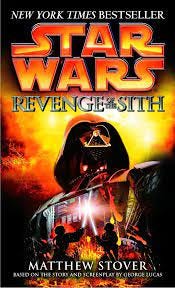
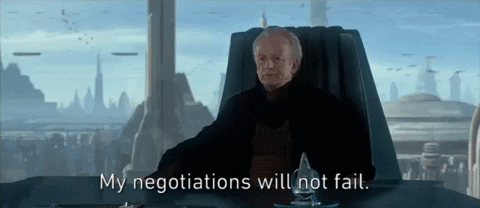
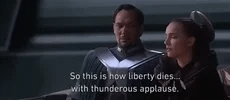
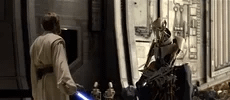
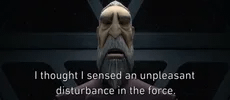
Your witty comments are a delight to read! I also really like the quotes in Quote Corner.